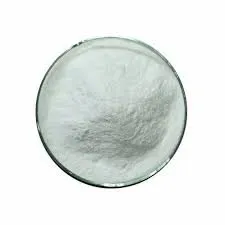
Nov . 08, 2024 02:54 Back to list
Hydroxyethyl Cellulose Production Methods and Techniques for High-Quality Results
The Manufacturing Process of Hydroxyethyl Cellulose
Hydroxyethyl cellulose (HEC) is a non-ionic, water-soluble polymer derived from cellulose, widely used in various applications such as pharmaceuticals, cosmetics, food products, and construction materials. The manufacturing process of hydroxyethyl cellulose involves several crucial steps to ensure the effective conversion of cellulose into a functional product. This article outlines the key stages in the production of hydroxyethyl cellulose.
The first step in the manufacturing process is the selection and preparation of raw materials. Cellulose is obtained primarily from wood pulp or cotton linters. The cellulose must be of high purity, free from contaminants that could affect the properties of the final product. Once the cellulose is sourced, it undergoes a drying and milling process to prepare it for etherification.
Following the preparation of cellulose, the next step is the etherification process, which is pivotal in transforming cellulose into hydroxyethyl cellulose. This is achieved by reacting cellulose with ethylene oxide in a controlled environment. Ethylene oxide is a colorless gas that, when polymerized, forms a compound that can etherify cellulose. The reaction typically takes place in a solvent system that may include water or a mixture of organic solvents to ensure the proper solubility and reaction conditions. The temperature, pressure, and concentration of the reactants are carefully controlled to optimize the degree of substitution, which directly influences the viscosity and solubility of the resultant hydroxyethyl cellulose.
Post-etherification, the reaction mixture is neutralized to terminate the reaction, often using acids or bases, depending on the specifics of the process. The neutralized mixture is then subjected to a series of purification steps, which include filtration and washing to remove unreacted materials and by-products from the reaction. This step is crucial to ensure that the final product meets the required purity standards for various applications.
hydroxyethyl cellulose manufacturing process

After purification, the hydroxyethyl cellulose is dried to remove excess moisture. The drying process is essential to stabilize the product and enhance its shelf life. Different drying techniques may be employed, including spray drying, drum drying, or vacuum drying, depending on the desired end product's characteristics. The dried hydroxyethyl cellulose can then be milled into a fine powder to achieve the desired particle size, facilitating its use in various applications.
Quality control plays an indispensable role throughout the manufacturing process. Analytical techniques such as viscosity measurement, pH determination, and infrared spectroscopy are employed to assess the properties of hydroxyethyl cellulose at various stages. This ensures that the final product not only meets the specifications but also performs reliably in its applications.
The versatility of hydroxyethyl cellulose can be attributed to its ability to modify viscosity and control water retention in different formulations. In the pharmaceutical industry, HEC is used as a thickening agent and stabilizer in ointments and gels. In construction, it serves as a water-retaining agent in cement and plaster. The food industry utilizes hydroxyethyl cellulose as a thickener and emulsifier, enhancing the texture and stability of products.
In conclusion, the manufacturing process of hydroxyethyl cellulose is a complex sequence of steps, involving careful selection of raw materials, precise control of reaction conditions, purification, and quality assurance. This process not only ensures the production of a high-quality product but also contributes to the various functionalities that make hydroxyethyl cellulose a valuable ingredient across multiple industries. As demand for environmentally friendly and sustainable products surges, HEC continues to grow in significance, aligning with the trends towards more natural and biodegradable materials.
-
Versatile Hpmc Uses in Different Industries
NewsJun.19,2025
-
Redispersible Powder's Role in Enhancing Durability of Construction Products
NewsJun.19,2025
-
Hydroxyethyl Cellulose Applications Driving Green Industrial Processes
NewsJun.19,2025
-
Exploring Different Redispersible Polymer Powder
NewsJun.19,2025
-
Choosing the Right Mortar Bonding Agent
NewsJun.19,2025
-
Applications and Significance of China Hpmc in Modern Industries
NewsJun.19,2025







